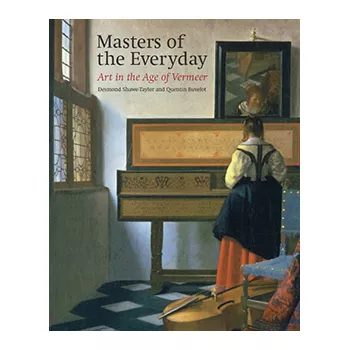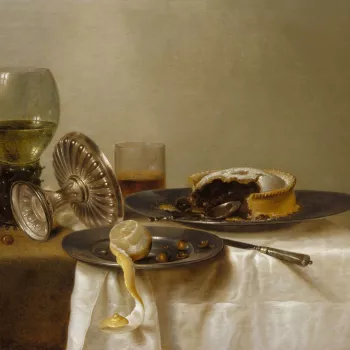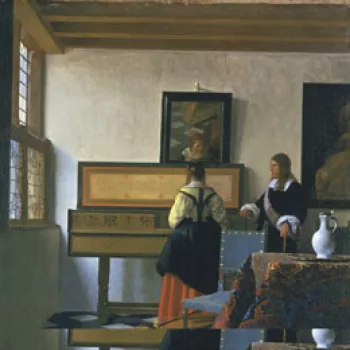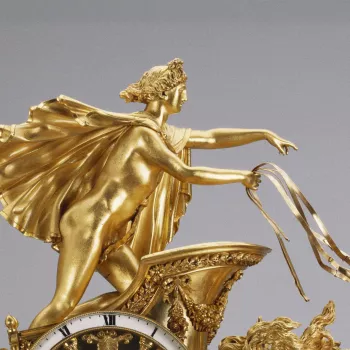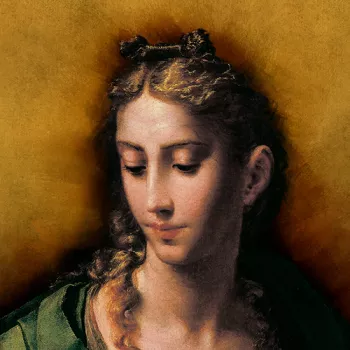The Listening Housewife Signed and dated 1655
Oil on panel | 74.9x 60.4 cm (support, canvas/panel/stretcher external) | RCIN 405535
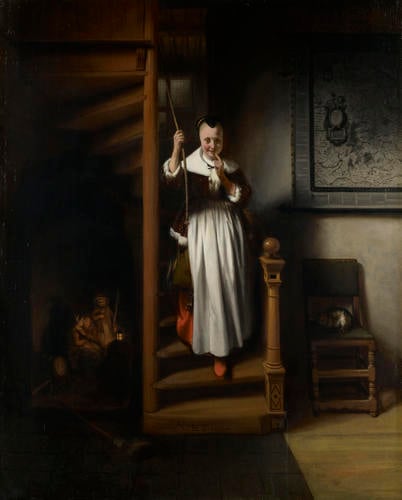
Nicolaes Maes (Dordrecht 1634-Amsterdam 1693)
The listening Housewife Signed and dated 1655
-
Maes painted several pictures with moralising themes based on domestic life during the 1650s: for example, Interior with a sleeping maid and her mistress (The Idle Servant) (National Gallery, London), The Listening Housewife (Wallace Collection, London), Lovers with a woman listening (London, Apsley House) and The Eavesdropper (Rijksbeeldende Kunst, The Hague), all of which are signed and dated. The Listening Housewife was in France at the end of the eighteenth century and was acquired by George IV in 1811. These paintings are vertical in format with elaborate interiors on different levels and with views through into another room - sometimes two. The principal figure, as here, engages the viewer with a direct gaze and often with an admonitory gesture indicating silence, thereby implicating us in the conspiratorial act of eavesdropping. The eavesdropper was also a popular figure in contemporary love poetry. Maes has used the same model with a similar dress in most of his depictions of this theme.
As regards the present composition, the object of our attention is the group in the room beneath the staircase comprising three figures: a couple kissing and an older man carrying a lantern. The painting is essentially a comment on the efficient running of a household. The broom seemingly cast aside at the foot of the staircase suggests that domestic chores have been abandoned in favour of other distractions. The woman’s playful smile indicates that she is herself not necessarily being censorious, but in fact encouraging the viewer to enjoy - as she is - the moral dilemma of this particular situation. Sometimes the admonitory gesture is accompanied by one with the other hand indicating the source of concern. There are, in addition, other indications of moral laxity. The pose of the forefinger raised to the lips, representing silence, has a classical origin in representations of Hippocrates, the god of silence, but it was also used during the Renaissance and afterwards for figures of cupids and satyrs seen in compromising situations. The map on the wall, although intended to represent Holland, is a reference to worldliness, whilst the cat asleep on the chair below it is a symbol of wantonness.
Signed and dated in centre on lowest step: 'N. MAES. A.1655'
Catalogue entry adapted from Enchanting the Eye: Dutch paintings of the Golden Age, London, 2004Provenance
Acquired by George IV when Prince of Wales in 1811; recorded in the Blue Velvet Closet at Carlton House in 1819 (no 51); in the Picture Gallery at Buckingham Palace in 1841 (no 17)
-
Medium and techniques
Oil on panel
Measurements
74.9x 60.4 cm (support, canvas/panel/stretcher external)
97.7 x 80.9 x 6.0 cm (frame, external)
Category
Object type(s)
Other number(s)




